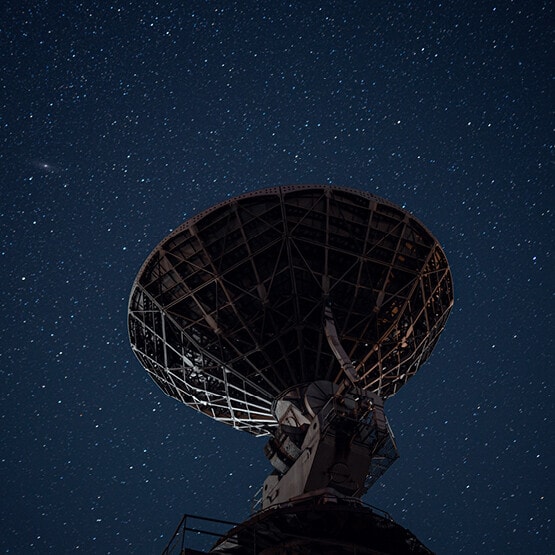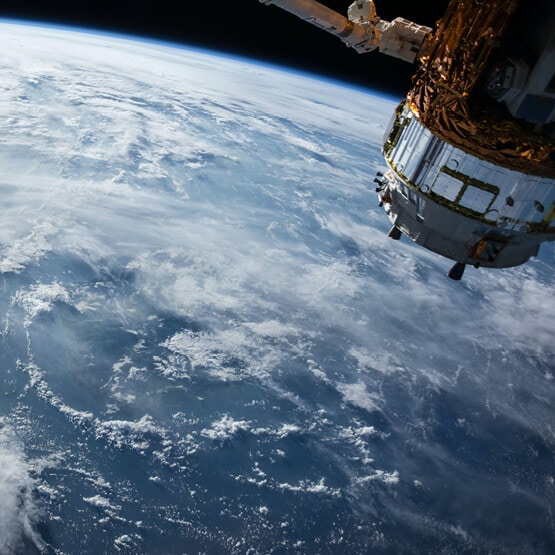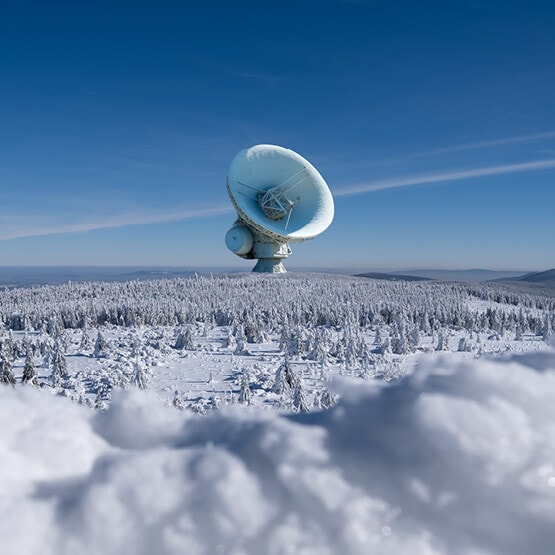
Guest Blog from Sima Adhya, Divisional Head Aviation & Space, Head of Innovation at Hamilton Group
Look up at the night sky for long enough and you will likely spot a point of light tracking steadily across the background of stars. Humankind sent the first satellite up into space in 1957 and since then, we have launched over 15,000 satellites (with almost half of those in the last four years!).
Satellites are a versatile tool with a wide range of applications, helping with communication, navigation, earth observation, military intelligence and scientific research. Many daily activities that we take for granted are supported by an army of heavenly robots. Without space, modern society would simply cease to function.
My journey through space and time
I first became interested in space when I was a child and harboured dreams of travelling there. Looking up at the vastness was comforting as it put smaller everyday worries into perspective. I liked maths and physics, so it was a natural choice to study science at university and specialise in space science for postgraduate studies.
After I finished studying for my PhD in Orbital Dynamics in 2005, my first job was working at the Space Division of QinetiQ in the UK as a Space Missions Scientist. I worked on a range of missions – satellite reliability, earth observation and even asteroid deflection! Through this role, I was introduced to insurance companies who relied on our analyses for space insurance premium pricing. I didn’t know space insurance existed before then, but I transitioned over 15 years ago and have held several space and innovation roles in insurance since. It’s an incredibly exciting time right now as we bear witness to the expansion of private companies pushing the boundaries of space travel with private space stations, moon missions and astrotourism.

I was lucky enough to work on some interesting NASA and ESA missions during my PhD and earlier career in the space industry. This field experience afforded me valuable insight into our clients’ requirements and it is satisfying to work together to mitigate risk and get projects off the ground – often literally.
Now I find my thoughts are turning to the future – our uncertain future – and I have become fascinated by the potential satellite data has to save the world.
New horizons for satellite data
Satellite data is a valuable tool in helping to address a range of global challenges, from climate change and natural disasters to food security and public health. By providing real-time, high-resolution data on various aspects of the planet, satellites can help governments, organisations, and individuals better understand and respond to these challenges.
For example, satellite data can be used to track changes in the Earth’s climate, such as rising sea levels or changes in vegetation patterns, allowing researchers and policymakers to better understand the impacts of climate change and develop more effective mitigation and adaptation strategies.
Satellites can also be used to monitor natural disasters such as hurricanes, wildfires and earthquakes. Some satellite constellations are looking at being able to deliver near real-time imagery (<10 minute revisit times) all over the world, which will have a huge impact on providing critical information to emergency responders and helping to save lives.

In addition to these environmental applications, satellite data can also be used to support a range of other sectors, including agriculture, transportation and telecommunications. For example, satellite data can help transportation companies optimise logistics and reduce emissions or help farmers monitor crops and improve yields. These same agricultural monitoring satellites can be used to create parametric insurance products that act as a vital safety net for small hold farmers affected by drought and flood.
Satellite technologies can’t alone reverse climate change, but they do offer us a set of tools to mitigate the carbon emissions from a huge range of industries.
Space technology is already decarbonising the world
Globant, a world leading sustainable tech firm, carried out a study commissioned by UK’s telecommunication company, Inmarsat, to estimate how much space technology is decarbonising the world today. The report is an in depth, optimistic read and I highly recommend checking out the full report here.
The Globant analysis looked at three sectors:
Agriculture, forestry and land Use:
Precision crop production management – with efficient uses of machinery, fuel, fertilisers and pesticides – and forest management enables decarbonisation through a number of different technologies, from tractor routing and yield mapping to forest fire early warning.
Transport and logistics:
The transport of people and supplies around the world by air, sea and road. Satellite communications are aiding decarbonisation through a mix of technologies like vessel voyage optimisation, weather routing and air traffic control management to ease congestion and improve fuel efficiency.
Energy systems:
Oil and gas production are a major source of greenhouse gases, primarily methane. Satellites can help in many ways. For example, the remote detection of harmful leaks, evaporation losses and accidents and equipment breakdown.
How much carbon are we talking about?
In 2021, the world emitted approximately 34.4 gigatons (34,400,000,000 tonnes) of carbon dioxide (CO2) into the atmosphere. The three sectors above account for more than 60% of global emissions, over 20 of these gigatons. Today, satellite technology is removing 1.5 gigatons (7.5%) of CO2 per year from the three driving sectors. To put this into context, the UK, France and Germany combined emit about 1.5 gigatons of CO2 each year.
If the same satellite decarbonising technologies were universally adopted in these three sectors, we could potentially avoid emitting an extra 4 gigatonnes of carbon. That’s more than the estimated annual worldwide CO2 emissions of all cars on the road!
In total, this would amount to 5.5 gigatonnes of carbon emissions that could be avoided just in the three sectors examined in this study – all using existing technology. That’s more than the USA’s national CO2 emissions in 2021!
If we include nascent technologies, such as enhanced air traffic management or autonomous shipping, we could see satellite-enabled decarbonisation reach a total of 8.8 gigatonnes, again that is just from three sectors. That’s like avoiding the CO2 emissions required to provide energy to North, Central, and South America for over a year!
This is huge.

The challenges of using space technology
There are however some factors that could threaten the ability of satellites to achieve these goals.
For satellites to enable these decarbonising technologies, they must be able to operate in Earth’s orbits over the long term. Therefore, the health of Earth’s orbits is a key consideration, and on our current course we are placing it in jeopardy. As we edge into the era of a new space race, humanity is accelerating its expansion into space. There are around 100,000 launches already proposed as part of active projects up to 2030. The lack of coordinated regulation, monitoring and management could lead to a level of expansion that might change space from an enabler of Net Zero on Earth into yet another threat to our environment.
An emerging problem that we have only seen in the last decade is the huge growth of new ‘mega-constellations’ which increase the risk of satellite failures and collisions. Mega-constellations are systems utilising hundreds to tens of thousands of satellites in Low Earth Orbit. These mass-produced satellites could quickly become the main constituent of the discarded equipment debris that orbits our planet. This could accelerate the ‘Kessler Effect’ and render Low Earth Orbit unusable: a dangerous hazard on our course to Net Zero.
Luckily, there are several companies working and collaborating to fix this problem, from active debris removal to better tracking and sharing data of all objects in space, allowing operators to reduce collision risk. Many governments around the world are developing legislation and guidance to mandate or at least incentivise “clean” operators. There is much to be optimistic about.
So, will satellite data save the world?
Yes. Or at least there is the opportunity to make a huge contribution, not just in mitigating emissions, but in helping up build resilience and create and enforce effective regulation.
However, it’s important to recognise that satellite data is one tool among many that can be used to address global challenges. Ultimately, the effectiveness of satellite data will depend on how it is used and integrated with other sources of data and information, as well as on the actions and decisions of governments, organisations, and individuals.
A note from Insurtech Gateway
“Thank you so much for sharing your story Sima, we are inspired by your passion for space technology and excited by the huge potential it has to move the dial on climate change. At Insurtech Gateway we are always eager to partner with innovative (re)insurers like Hamilton.
We also want to meet founders with scientific backgrounds, interested in exploring the insurtech opportunities within the space sector. If you have a big idea or have already founded a pre-seed or seed insurtech, we have the experience and the tools to help you launch and scale faster. Check out our incubator and venture fund or get in touch.”